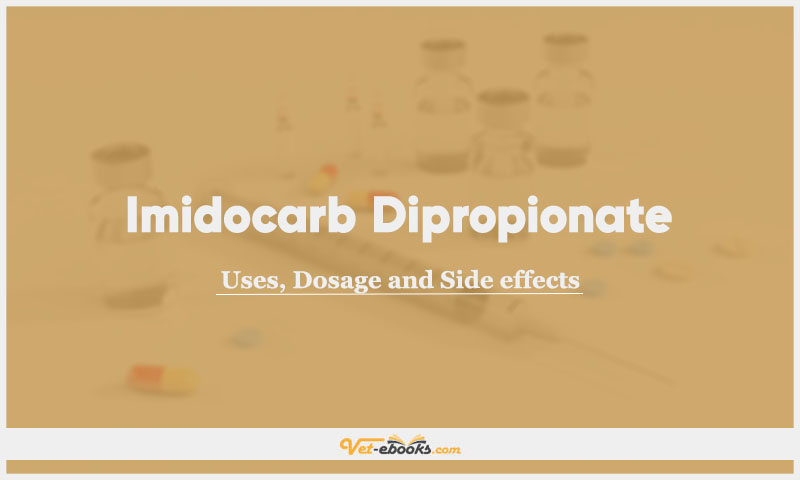Imidocarb Dipropionate In Dogs & Cats:: Uses, Dosage and Side Effects

Overview
- Interferes with the metabolic process of nucleic acids in parasites.
Uses of Imidocarb dipropionate
- Treatment of Babesia canis infection in dogs.
Dose of Imidocarb dipropionate in Dogs and Cats
Dogs:
- Treatment of Babesia canis infection: 6.6 mg/kg imidocarb dipropionate i.m., s.c. once, repeated in 2–3 weeks.
- The dose should be calculated based on Imizol containing 121.15 mg/ml imidocarb
dipropionate. - Premedication with atropine (0.05 mg/kg) to minimize side effects could be considered.
Cats:
- Treatment of Babesia canis infection: 2.5 mg/kg imidocarb dipropionate i.m. once can improve clinical signs in cats infected with large babesial species.
- The dose should be calculated based on Imizol containing 121.15 mg/ml imidocarb dipropionate.
- Alternative agents are preferable for smaller species (e.g. Babesia felis); however,
the parasitological cure is rare and controlled therapeutic trials are lacking.
Drug Dosage Calculator
You Should Give:
Side Effects of Imidocarb dipropionate in Dogs and Cats
- After a dose, cholinergic signs like salivation, vomiting, and sometimes diarrhoea, panting, and nervousness can happen.
- Atropine might help with these signs.
- Mild irritation at the injection site has been reported to last from one to several days and may lead to sores.
- Cattle have been known to have anaphylactoid responses, but dogs have not.
Contraindications of Imidocarb dipropionate in Dogs and Cats
- Do not administer i.v.
Some Notes:
- Avoid concurrent use of anticholinesterases.
Tip
Do You Want To Increase Your Veterinary Knowledge and Practical Skills?
You Can Now Browse and Download +3000 Books For Veterinary Professionals & Students Online.
Download Veterinary Books


















